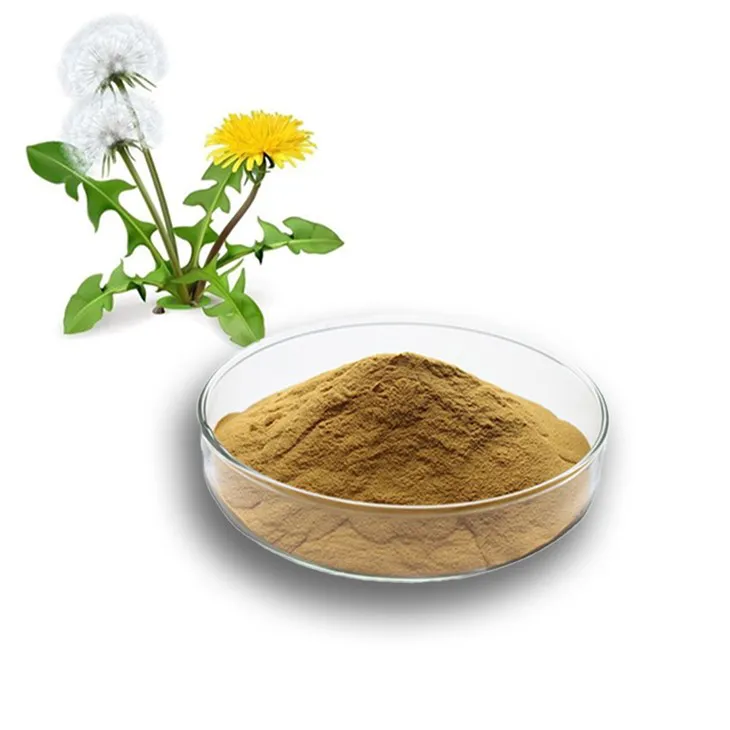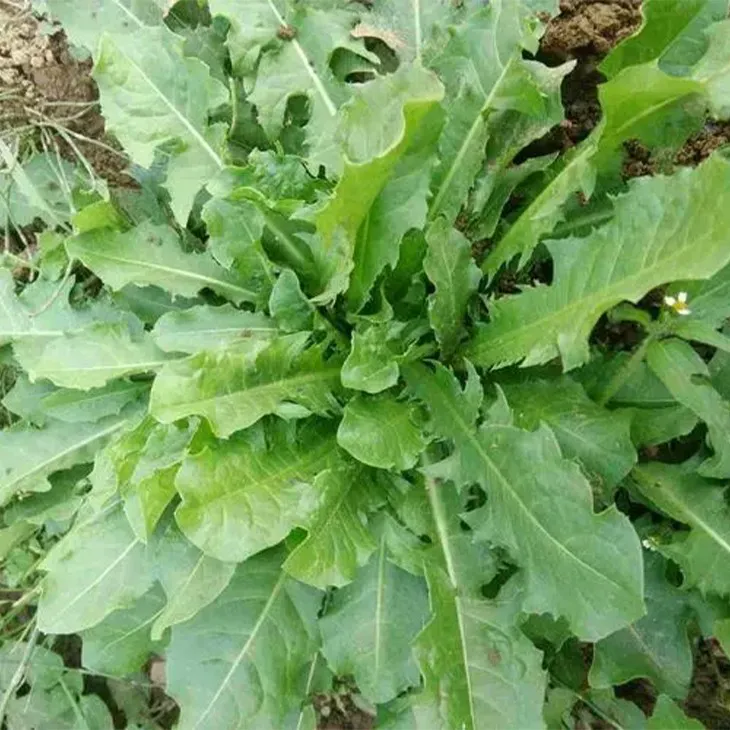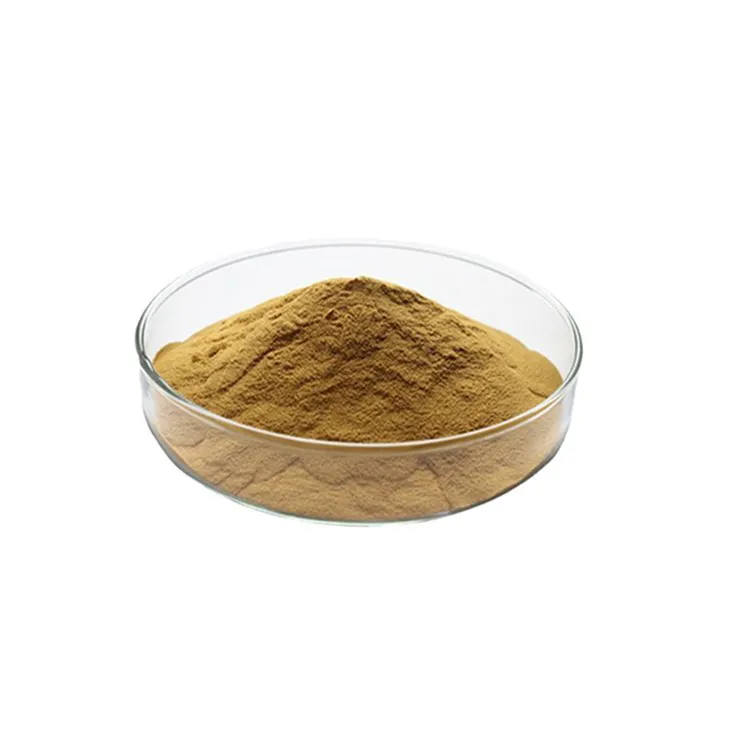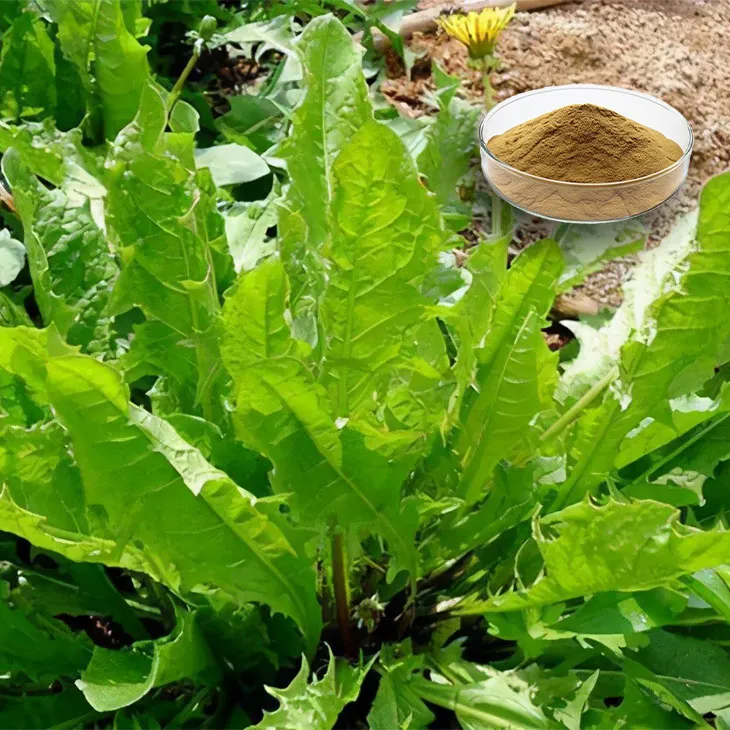- 0086-571-85302990
- sales@greenskybio.com
The flavor of mature dandelion leaves and natural dandelion leaf extract.
2024-11-13

1. Introduction
Dandelions, often regarded as common weeds, are actually plants with remarkable properties. The mature dandelion leaves, in particular, possess a unique flavor profile that has been underappreciated for a long time. Meanwhile, natural Dandelion Leaf Extracts have gained increasing attention in various fields. This article aims to comprehensively explore these two aspects, providing valuable information for different interested parties, such as those in the culinary world, the herbal remedy community, and industries related to natural products.

2. The Flavor of Mature Dandelion Leaves
2.1 Bitterness
Bitterness is one of the most prominent characteristics of mature dandelion leaves. This bitterness is not a simple, one - dimensional taste. It is a complex blend that is influenced by various factors. The presence of certain chemical compounds, such as sesquiterpene lactones, contributes significantly to this bitter flavor. These compounds are not only responsible for the taste but also play a role in the potential health benefits of dandelion leaves, which will be discussed later.
2.2 Earthiness
In addition to bitterness, mature dandelion leaves also have a distinct earthiness. This earthy flavor can be attributed to the plant's natural growth environment. Dandelions grow close to the ground, absorbing nutrients and minerals from the soil. The soil composition, including elements like iron, potassium, and various organic matter, imparts this earthy taste to the leaves. It gives the impression of freshness and a connection to nature, which can be quite appealing in certain culinary preparations.
2.3 How the Flavor Changes with Growth and Season
The flavor of dandelion leaves is not static; it changes as the plant grows and with the changing seasons. In the early stages of growth, the leaves may be less bitter and more tender. As they mature, the bitterness intensifies, and the earthiness becomes more pronounced. During different seasons, factors such as temperature, sunlight, and rainfall can also affect the chemical composition of the leaves, thereby altering their flavor. For example, in cooler seasons, the leaves may develop a more concentrated flavor due to slower growth and a more intense extraction of nutrients from the soil.

3. Natural Dandelion Leaf Extracts
3.1 Extraction Methods
There are several methods for extracting natural Dandelion Leaf Extracts. One common method is solvent extraction. In this process, solvents such as ethanol or water are used to dissolve the active compounds from the dandelion leaves. Ethanol is often preferred as it can extract a wide range of compounds effectively. Another method is steam distillation, which is mainly used for extracting volatile compounds from the leaves. This method is particularly useful for obtaining essential oils from dandelion leaves, which have their own unique properties and applications.
Supercritical fluid extraction is also an emerging method. It uses supercritical fluids, such as carbon dioxide, which have properties between a gas and a liquid at specific conditions. This method offers several advantages, including high selectivity, low toxicity, and the ability to operate at relatively low temperatures, which helps preserve the integrity of the extracted compounds.
3.2 Potential Health Benefits
Dandelion leaf extracts are rich in various bioactive compounds, which endow them with numerous potential health benefits. One of the well - known benefits is their diuretic effect. The compounds in the extracts can increase urine production, which helps in flushing out toxins from the body. This can be beneficial for kidney health and for reducing water retention in the body.
Another important aspect is their antioxidant activity. Dandelion leaf extracts contain antioxidants such as flavonoids and phenolic acids. These antioxidants can scavenge free radicals in the body, protecting cells from oxidative damage. Oxidative damage is associated with various diseases, including cancer, heart disease, and neurodegenerative disorders.
Dandelion leaf extracts may also have anti - inflammatory properties. Inflammation is a common underlying factor in many chronic diseases. The anti - inflammatory compounds in the extracts can help reduce inflammation in the body, potentially alleviating symptoms of conditions such as arthritis.
3.3 Diverse Applications in Different Industries
In the food industry, dandelion leaf extracts can be used as a natural flavor enhancer. Their unique flavor can add depth and complexity to various food products. For example, they can be used in salad dressings, soups, and even in the production of certain types of cheese. They can also be used as a natural preservative due to their antioxidant properties.
In the cosmetic industry, dandelion leaf extracts are finding increasing use. Their antioxidant and anti - inflammatory properties make them suitable for use in skincare products. They can be incorporated into creams, lotions, and serums to help protect the skin from environmental damage, reduce inflammation, and improve skin health.
In the pharmaceutical industry, the potential health benefits of dandelion leaf extracts are being explored further. They may be used as a basis for developing new drugs or as complementary therapies. For example, their diuretic effect may be utilized in the treatment of certain kidney - related disorders.

4. Comparison between the Flavor of Mature Dandelion Leaves and Their Extracts
The flavor of mature dandelion leaves and their extracts share some similarities but also have distinct differences. The extracts tend to concentrate certain flavor components of the leaves. For example, the bitterness may be more intense in the extracts, especially if they are highly concentrated. However, the earthiness may be somewhat diminished during the extraction process, depending on the method used.
On the other hand, the whole dandelion leaves offer a more complex and multi - faceted flavor experience. When consumed raw or cooked, the texture of the leaves also plays a role in the overall sensory perception. The extracts, in contrast, are more suitable for applications where a more standardized and concentrated flavor is desired, such as in the food and cosmetic industries.

5. Culinary Uses of Mature Dandelion Leaves and Their Extracts
5.1 Using Mature Dandelion Leaves in Cooking
Mature dandelion leaves can be used in a variety of culinary preparations. They can be added to salads, providing a bitter and earthy contrast to other milder salad ingredients. However, it is important to note that due to their strong flavor, they should be used in moderation. Dandelion leaves can also be cooked, such as sautéed with garlic and olive oil. Cooking can help to mellow out the bitterness to some extent, making them more palatable for some people.
5.2 Incorporating Dandelion Leaf Extracts in Culinary Creations
Dandelion leaf extracts can be used in more creative ways in the culinary world. They can be added to marinades to impart their unique flavor to meats or vegetables. In baking, a small amount of dandelion leaf extract can add an unexpected and interesting flavor dimension to cakes or cookies. They can also be used to flavor beverages, such as teas or cocktails, creating unique and refreshing drinks.
6. Conclusion
In conclusion, the flavor of mature dandelion leaves and natural dandelion leaf extracts are both fascinating aspects of this humble plant. The complex flavor of the leaves, with its bitterness and earthiness, and the potential health benefits and diverse applications of the extracts make dandelions a plant worthy of further study and exploration. Whether in the culinary, herbal remedy, or industrial fields, dandelions have much to offer. As more research is conducted, we can expect to see even more innovative uses of dandelion leaves and their extracts in the future.
FAQ:
What is the taste of mature dandelion leaves?
The taste of mature dandelion leaves is a complex blend of bitterness and earthiness.
How are natural dandelion leaf extracts obtained?
The article mentions the extraction methods of natural dandelion leaf extracts, but specific details are not provided here. Generally, common extraction methods may include solvent extraction, where suitable solvents are used to draw out the active components from the dandelion leaves.
What are the potential health benefits of natural dandelion leaf extracts?
The article doesn't give a comprehensive list of health benefits in this short summary. However, in general, dandelion leaf extracts may have potential benefits such as aiding in digestion, having antioxidant properties, and potentially helping with liver function. These benefits are often related to the various bioactive compounds present in the dandelion leaves.
In which industries are natural dandelion leaf extracts used?
Natural dandelion leaf extracts are used in different industries. In the herbal remedy industry, they can be used for formulating natural health products. In the culinary world, they may be used as a flavoring agent or ingredient in certain recipes. They may also find applications in the cosmetic industry due to their potential beneficial properties for the skin.
Why is the flavor of mature dandelion leaves often overlooked?
There could be several reasons. One might be that dandelion leaves are not as commonly consumed as other mainstream greens, so their unique flavor is not well - known. Also, their bitterness may be a factor that deters people from exploring their taste, leading to it being overlooked.
Related literature
- The Nutritional and Medicinal Properties of Dandelion Leaves"
- "Dandelion Leaf Extracts: Production and Their Role in Health"
- "The Use of Dandelion in Culinary and Herbal Applications"
- ▶ Hesperidin
- ▶ citrus bioflavonoids
- ▶ plant extract
- ▶ lycopene
- ▶ Diosmin
- ▶ Grape seed extract
- ▶ Sea buckthorn Juice Powder
- ▶ Beetroot powder
- ▶ Hops Extract
- ▶ Artichoke Extract
- ▶ Reishi mushroom extract
- ▶ Astaxanthin
- ▶ Green Tea Extract
- ▶ Curcumin Extract
- ▶ Horse Chestnut Extract
- ▶ Other Problems
- ▶ Boswellia Serrata Extract
- ▶ Resveratrol Extract
- ▶ Marigold Extract
- ▶ Grape Leaf Extract
- ▶ blog3
- ▶ blog4
- ▶ blog5
-
Organic Tongkat Ali extract powder factory.
2024-11-13
-
How to make powder with ashwagandha extract.
2024-11-13
-
Rosehip extract manufacturers from China.
2024-11-13
-
The best cat's claw extract in nature.
2024-11-13
-
Chinese Dandelion Leaf Extract Suppliers.
2024-11-13
-
Longan Extract
2024-11-13
-
Panax Ginseng Leaf Extract
2024-11-13
-
Grape Leaf Extract
2024-11-13
-
Red Vine Extract
2024-11-13
-
Beta Carotene
2024-11-13
-
Yam Extract
2024-11-13
-
Lemon Balm Extract
2024-11-13
-
Genistein
2024-11-13
-
Mangosteen extract powder
2024-11-13
-
Coix Seed Extract
2024-11-13





















